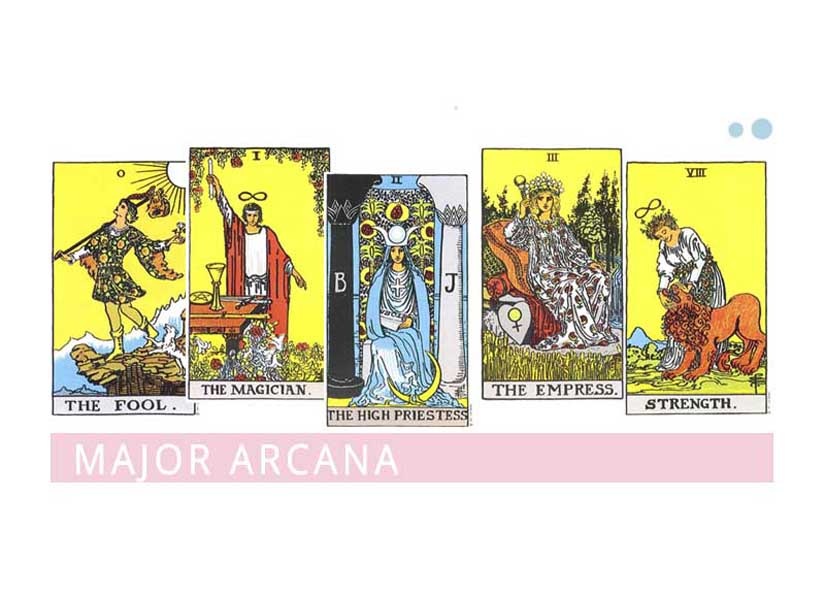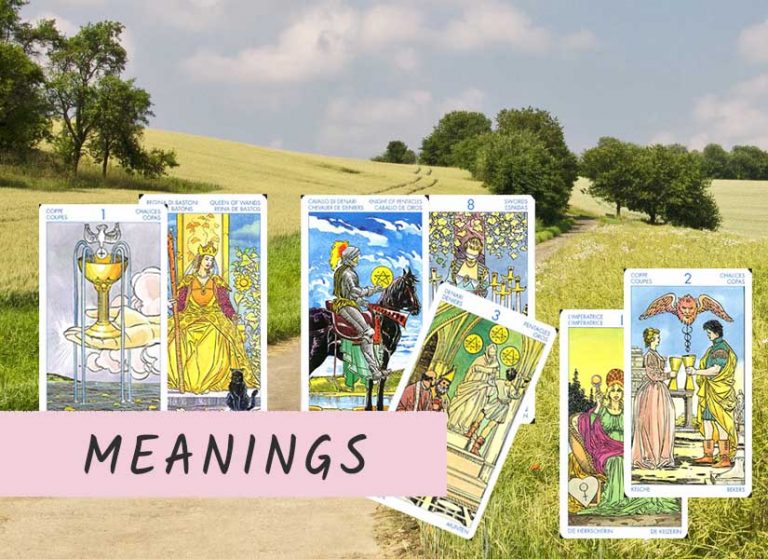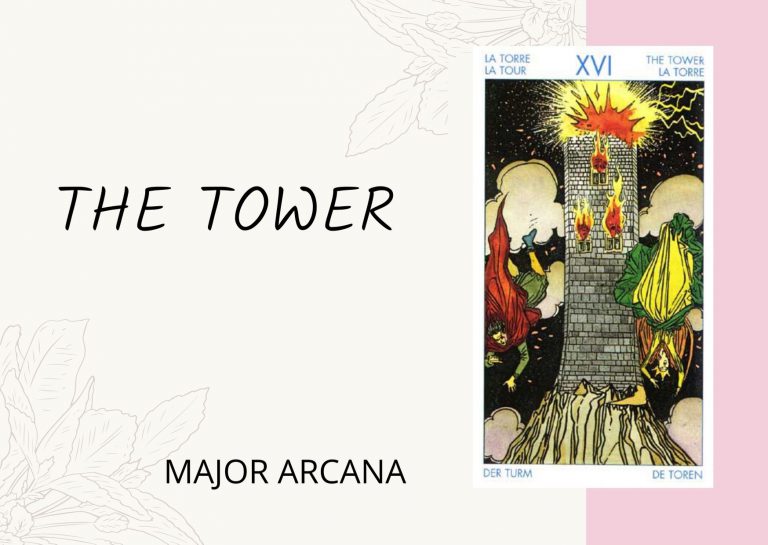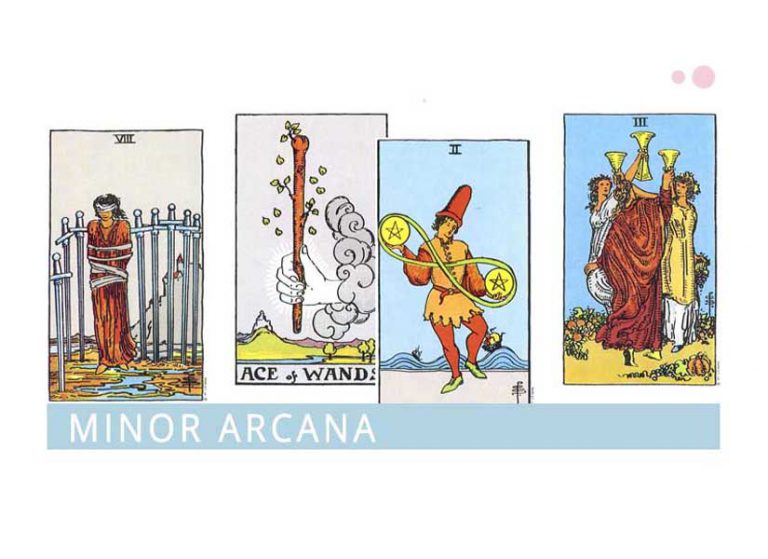A tarot pack includes the Major Arcana and Minor Arcana. There are 22 cards within the Major Arcana of the Tarot. These cards represent the core of the deck. If you may know, the Tarot is filled with different archetypal models. Major Arcana of the Tarot tells us a story about spiritual travels starting from 0 card, the Fool, and ending with the World.
Thus, as we follow the excursion of the Fool, we can begin seeing parallels between our own life phases and those in the Tarot. It is interesting that each card has its own lesson. Each card can teach us something. Everything has meaning. It is true in the case of the Tarot. A card image can look simply, but each is full with symbols. So, when you read your tarot card reading, do not forget to glance at its picture.
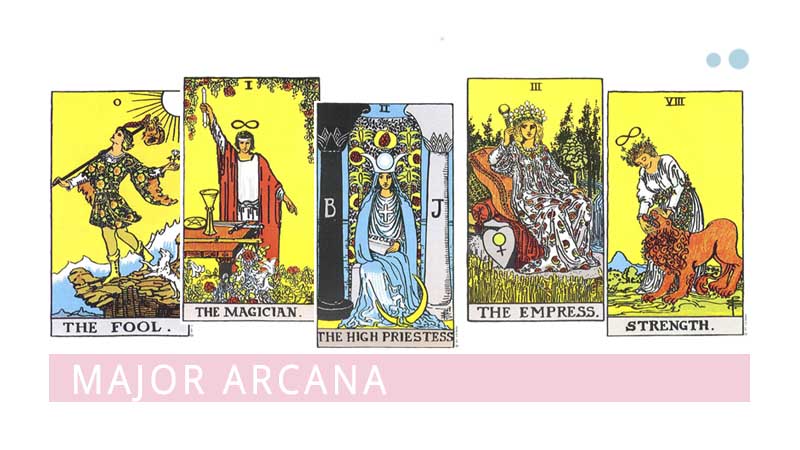
Major Arcana Tarot Card List
The source: gutenberg.org
The Major Arcana of the Tarot: Cards 0-5
The Fool (other names Mate, or Unwise Man). Court de Gebelin places it at the head of the whole series as the zero which is pre-supposed by numeration. And as this is a simpler so also it is a better arrangement. It has been abandoned because in later times the cards have been attributed to the letters of the Hebrew alphabet. And there has been apparently some difficulty about allocating the zero symbol satisfactorily in a sequence of letters all of which signify numbers. In the present reference of the card to the letter Shin the difficulty or the unreason remains. The truth is that the real arrangement of the cards has never transpired.
The Fool carries a wallet. He is looking over his shoulder and does not know that he is on the brink of a precipice; but a dog or other animal is attacking him from behind, and he is hurried to his destruction unawares. The famous Etteilla has given a justifiable variation of this card. In the form of a court jester, with cap, bells and motley garb. The other descriptions say that the wallet contains the bearer’s follies and vices, which seems bourgeois and arbitrary.
The Magician (sometimes Juggler), the caster of the dice and mountebank, in the world of vulgar trickery. This is the colportage interpretation. And it has the same correspondence with the real symbolical meaning that the use of the tarot cards in fortune-telling has with its mystic construction according to the secret science of symbolism.
The High Priestess (sometimes the Pope Joan, or Female Pontiff). Early expositors have sought to term this card the Mother, or Pope’s Wife, which is opposed to the symbolism. It is sometimes held to represent the Divine Law and the Gnosis. In which case the Priestess corresponds to the idea of the Shekinah. She is the Secret Tradition and the higher sense of the instituted Mysteries.
The Empress. This card sometimes represents with full face, while her correspondence, the Emperor, is in profile. As there has been some tendency to ascribe a symbolical significance to this distinction, it seems desirable to say that it carries no inner meaning. The Empress has been connected with the ideas of universal fecundity and in a general sense with activity.
The Emperor. The 4-th Major Arcana Tarot by imputation the spouse of the former. This card is occasionally represented as wearing, in addition to his personal insignia; the stars or ribbons of some order of chivalry. I mention this to show that the cards are a medley of old and new emblems. Those who insist upon the evidence of the one may deal, if they can, with the other. No effectual argument for the antiquity of a particular design can be drawn from the fact that it incorporates old material. But there is also none which can be based on sporadic novelties, the intervention of which may signify only the unintelligent hand of an editor or of a late draughtsman.
The Hierophant or High Priest, called also Spiritual Father, and more commonly and obviously the Pope. It seems even to have been named the Abbot, and then its correspondence, the High Priestess, was the Abbess or Mother of the Convent. Both are arbitrary names. The insignia of the figures are papal. And in such case the High Priestess is and can be only the Church, to whom Pope and priests are married by the spiritual rite of ordination. I think, however, that in its primitive form this card did not represent the Roman Pontiff.
